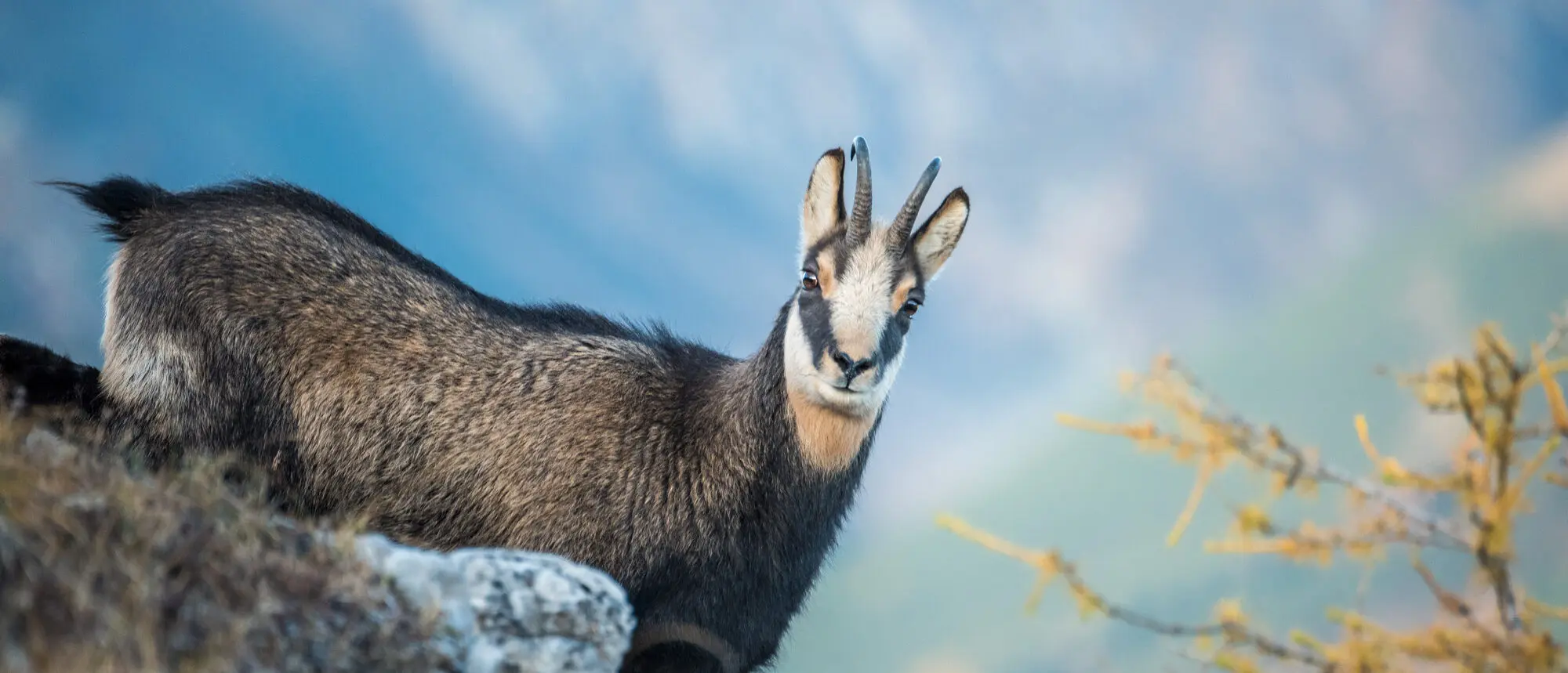The chamois is the only animal that has never become extinct or been exterminated in the National Park.
The need to protect the chamois was one of the main arguments for the creation of the Park. Since 1920 the chamois population has, without being hunted, fluctuated between 1000 and 1700 animals. Why their numbers have not considerably increased is the subject of scientific research.
Female chamois live with their young, in herds, throughout the year.
It is not easy to differentiate between male and female chamois, as they both carry similar horns. The horns of the female are more slender and not so curved as those of the male. Chamois horns consist, as their name suggests, of horn, rather like our finger nails. They grow continually and are not shed.
The hooves of the chamois greatly contribute to their agility when moving around in rocky terrain. Hard on the edges, but smooth like leather in the centre, they afford a good grip. Early mountain shoes were made in a similar way.
Male chamois are solitary and remain in the same territory all year round.
The habitat of the chamois is not only mountainous. They are also found in mountain forests, where there is plentiful food and shelter. Chamois that live in the forests often have a layer of resin on their horns.

During their first summer, the young chamois have to learn how to survive in the rocky mountainous terrain.
Born in June, a few hours after birth chamois kids follow their mothers everywhere. From time to time, when fleeing, they lose contact with the group and their plaintive cries can be heard from afar.
 During the yearly rutting season, in November, brutal combats take place.
During the yearly rutting season, in November, brutal combats take place.
Male chamois pursue each other intensively. With their sharply pointed horns, fights to assert superiority can, very occasionally, lead to the death of one or both of the combatants.
As well as sight and sound, smell also plays an important role in communication between chamois. By rubbing their horns on branches and twigs, males deposit a secretion smelling of musk from glands situated behind the horns, in particular during the rutting season. This smell permits individual recognition by other males.




